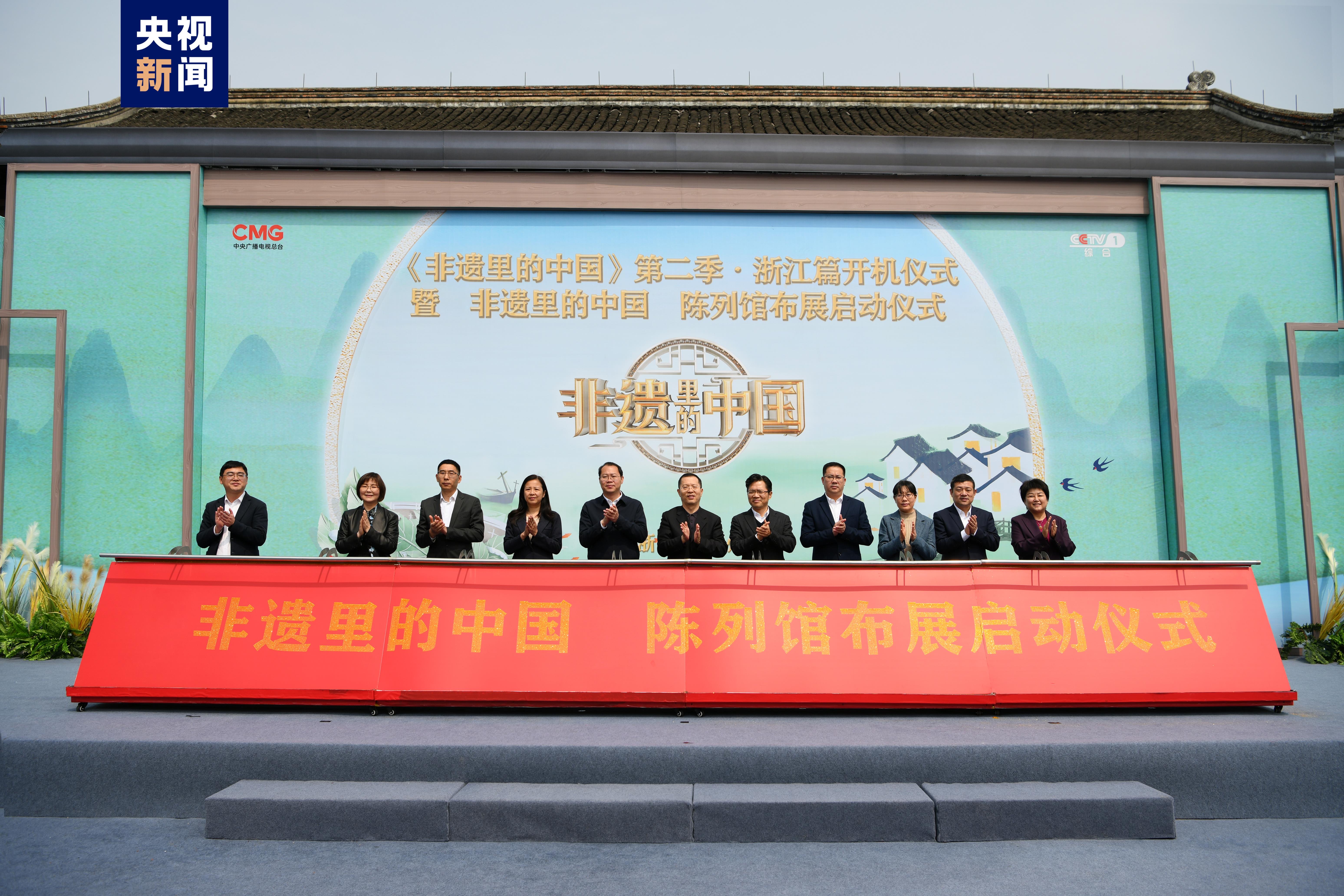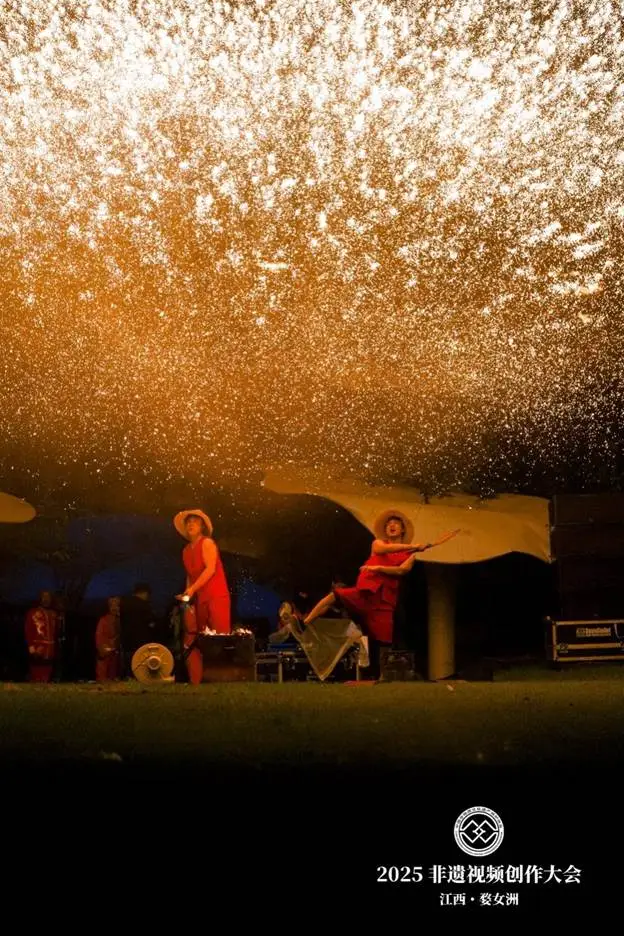
On March 27, the launch of the Zhejiang chapter of the second season of China Central Radio and Television's large-scale cultural seasonal program "China in Intangible Cultural Heritage" and the launching ceremony of the China Exhibition Hall in Intangible Cultural Heritage were held in Nanxun, Zhejiang.
It is reported that the Zhejiang chapter of the second season will be recorded at the end of April, and the China Exhibition Hall in Intangible Cultural Heritage will be opened in Digang Ancient Town, Nanxun District, Huzhou.

"China in Intangible Cultural Heritage" poster
Liang Jianzeng, Director of the Editorial Office of China Central Radio and Television, said in his speech that the rich and colorful intangible cultural heritage is the crystallization of the wisdom and civilization of the Chinese nation. Adhering to the respect for China's excellent traditional culture and the enthusiasm for the inheritance and innovation of intangible cultural heritage, China Central Radio and Television and the Ministry of Culture and Tourism jointly launched "China in Intangible Cultural Heritage". The first season of the program won both ratings and reputation. Good harvest. The main station has a series of cultural programs that use online and offline linkage to form a highly sought-after cultural IP. Zhejiang Province is the province with the most national-level intangible cultural heritage projects. Here, the creative transformation and innovative development of intangible cultural heritage are outstanding, and many intangible cultural heritage projects have cultivated modern industrial chains. The second season of "China in Intangible Cultural Heritage" comes to Zhejiang, enters Huzhou, and lands the exhibition hall in Diggang Ancient Town, Nanxun District. It is a demonstration project for the revitalization of intangible cultural heritage. Through the perfect combination of "intangible cultural heritage + cultural tourism", Let every tourist gain an unprecedented new experience in intangible cultural heritage tourism.

event site
The first season of the large-scale cultural seasonal program "China in Intangible Cultural Heritage" went to a total of 11 neighborhoods in Zhejiang, Fujian, Sichuan, Hebei and other places that gathered local characteristic intangible cultural heritage projects to experience the beauty of intangible cultural heritage in an immersive and interactive way. Through a journey of Chinese civilization that "sees people, things and life", the audience will be shown the inheritance and innovation of ancient intangible cultural heritage in modern times. From the exquisite skills of thousands of industries to the cultural and elegant utensils from all over the country, to the daily necessities of life, each piece of intangible cultural heritage wisdom originated from and used in life has traveled through time and region, integrated into people's daily life, and become a constantly glowing The precious wealth of vitality.
The first rerun of the program reached a cumulative audience of 1.2 billion people, and the entire network covered more than 8 billion users. The filming location has become a popular check-in place and tourist destination, effectively boosting the growth of the local cultural and tourism economy and realizing the integration of intangible cultural heritage and cultural tourism. The "two-way rush".
In Huzhou, Zhejiang, the Jili Lake silk produced in Jili Village, Nanxun Town has been famous for its "thin, round, even, strong, white, clean, soft and tough" characteristics since ancient times. It is the royal silk used to make the emperor's dragon robes. For hundreds of years, traditional hand-made silk reeling techniques have been passed down from generation to generation by silk craftsmen, and new uses have been developed with the assistance of technology. In the Zhejiang station of "China in Intangible Cultural Heritage", Tao Hu, an innovative user of intangible cultural heritage and deputy director of the Shanghai Institute of Microsystems, Chinese Academy of Sciences, connected silk reeling with life sciences and digital information industries through "cross-border" research and development. , utilizing the optical properties of silk, extracting silk protein to make storage hard drives. Not only can digital information be stored at a very high density, but it can also be well compatible with blood DNA (deoxyribonucleic acid) drugs, antibiotics, and vaccines to achieve simultaneous storage of life information and digital information.
It is understood that the inheritance and innovation of intangible cultural heritage in Zhejiang Province have achieved remarkable results. A total of 11 intangible cultural heritage items are included in the UNESCO Representative List of Intangible Cultural Heritage of Humanity, and 257 intangible cultural heritage items are included in the national intangible cultural heritage masterpieces. directory. Huzhou is an important birthplace of silk brush, Zen tea, calligraphy and painting culture. It has 11 national-level intangible cultural heritage projects and 58 provincial-level intangible cultural heritage projects. The China Exhibition Hall in the Intangible Cultural Heritage Area will present the layout of "Song, Yuan, Ming and Qing Dynasties, the four dynasties flowed together; the West School and the East Hall form a beautiful scene together". The intangible cultural heritage works, customized cultural creations, intangible cultural heritage performances, etc. that appear in the program will all be displayed in the exhibition hall. Recurred in.
At the event, the intangible cultural heritage inheritors of Huzhou City also displayed exquisite intangible cultural heritage projects such as Hu pen making skills, Shuanglin silk weaving skills, and Huzhou feather fan making skills, allowing people to personally feel that they were born in the "house of silk, the land of fish and rice". The intangible cultural heritage charm of "a cultural country".


